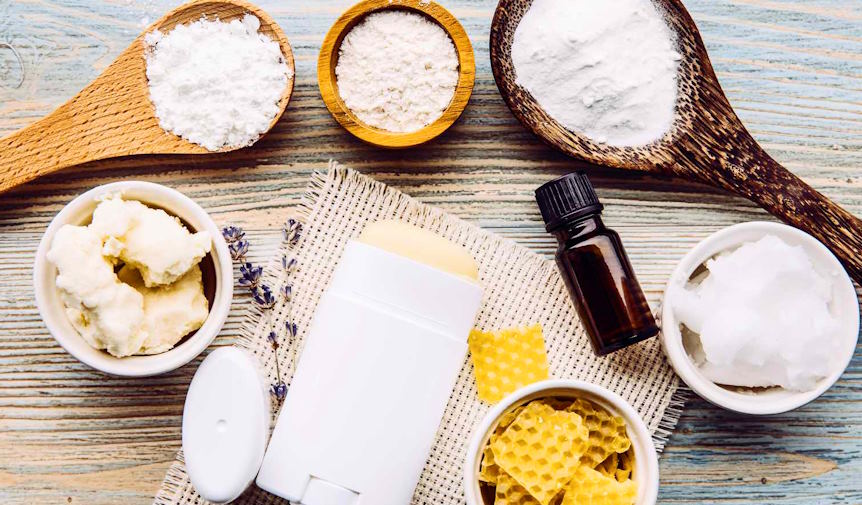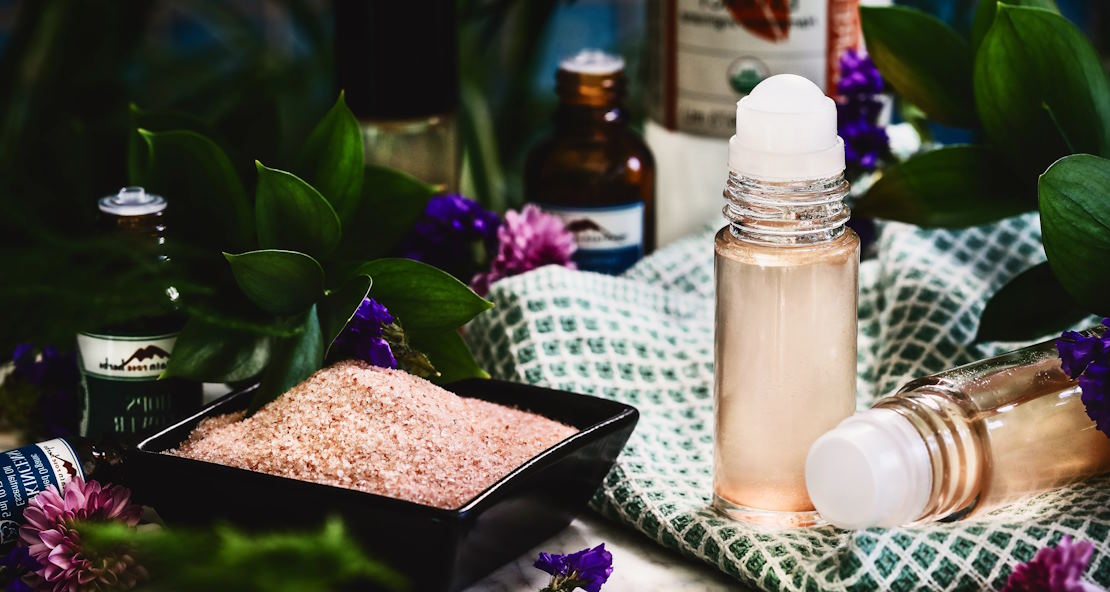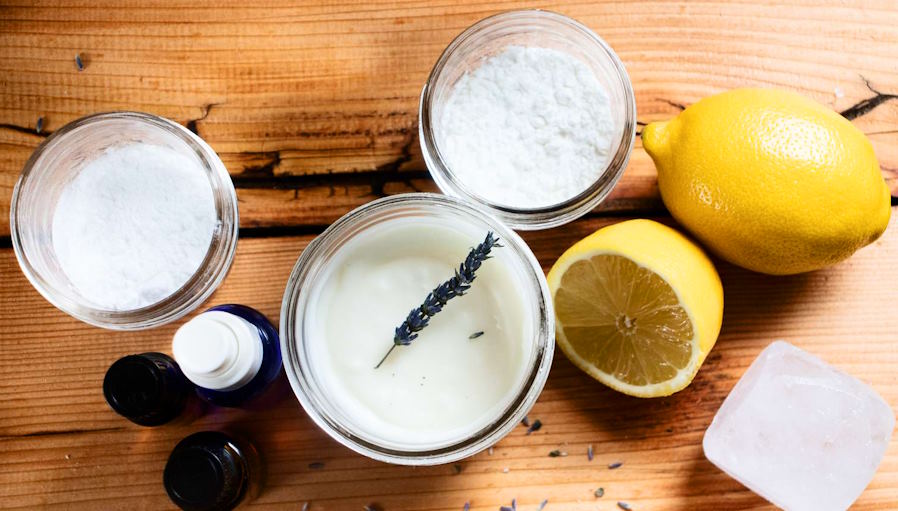Deodorants have become an integral part of our daily grooming routines, offering a refreshing burst of confidence and assurance. These seemingly small sticks and sprays promise to keep us smelling fresh and feeling dry throughout the day. However, beneath their pleasant scents and convenient packaging lie a myriad of concerns regarding their safety. Commercial deodorants, laden with chemicals like aluminum compounds and synthetic fragrances, have come under increasing scrutiny due to their potential health risks, ranging from links to breast cancer to skin irritations. It’s time to explore a safer alternative – DIY natural deodorants.
The Benefits of Natural Deodorants
When it comes to personal care products like deodorants, choosing natural alternatives can be a game-changer for your well-being. Here are some compelling reasons why making the switch to natural deodorants is a wise choice:
- Use of Natural Ingredients: One of the most significant advantages of natural deodorants is their reliance on simple, natural ingredients. These products often feature ingredients like baking soda, arrowroot powder, coconut oil, and essential oils. These components not only help combat odor effectively but also provide a host of additional benefits. For instance, coconut oil offers moisturizing properties, while essential oils infuse pleasant scents and even antibacterial qualities. With natural deodorants, you can feel confident knowing that what you’re applying to your skin is derived from nature.
- Elimination of Harmful Chemicals: Commercial deodorants often contain a laundry list of chemicals, including aluminum compounds, parabens, and synthetic fragrances. These chemicals have been associated with various health concerns, ranging from breast cancer suspicions to skin irritations. By switching to natural alternatives, you eliminate the risk of exposing yourself to these potentially harmful substances, promoting a safer and healthier daily routine.
- Reduced Risk of Skin Irritation and Allergies: Skin sensitivities and allergies can be triggered by the harsh chemicals found in conventional deodorants. Natural deodorants, on the other hand, are gentler on the skin. They tend to be hypoallergenic, reducing the likelihood of redness, itching, or rashes. This makes them an excellent choice for individuals with sensitive skin, allowing for a comfortable and irritation-free experience.
DIY Natural Deodorant Recipes
Making your own natural deodorant at home isn’t just an eco-friendly choice; it’s also a fantastic way to ensure that you’re using safe, wholesome ingredients on your skin. Let’s dive into the world of DIY natural deodorants, starting with the key ingredients and some easy-to-follow recipes:
Overview of Common Ingredients:
- Baking Soda: Baking soda is a natural odor neutralizer and an essential ingredient in many natural deodorant recipes. It helps absorb moisture and combat odor effectively.
- Coconut Oil: Coconut oil provides a creamy texture and offers antimicrobial properties. It helps keep your skin soft and hydrated.
- Arrowroot Powder: Arrowroot powder is a natural thickening agent that helps absorb moisture, leaving you feeling dry throughout the day.
- Essential Oils: Essential oils like lavender, tea tree, and lemon not only add pleasant scents but also provide antibacterial and antimicrobial properties.
Step-by-Step Instructions for Making Natural Deodorant:
- Recipe 1: Baking Soda and Arrowroot Powder
- Mix 1/4 cup baking soda and 1/4 cup arrowroot powder in a bowl.
- Add 4 tablespoons of coconut oil and a few drops of your favorite essential oil.
- Combine until you achieve a smooth, creamy consistency.
- Transfer to a clean, empty deodorant container or a small jar.
- Recipe 2: Coconut Oil and Shea Butter
- Melt 3 tablespoons of coconut oil and 2 tablespoons of shea butter in a double boiler.
- Remove from heat and stir in 2 tablespoons of arrowroot powder and 2 tablespoons of baking soda.
- Add a few drops of essential oil for fragrance.
- Pour the mixture into a container and let it cool and solidify.
- Recipe 3: Probiotic Deodorant with Essential Oils
- Combine 1/4 cup arrowroot powder, 1/4 cup baking soda, and 2 tablespoons of probiotic powder.
- Mix in 5 tablespoons of coconut oil and a few drops of essential oil.
- Blend until well combined and store in a container.
Tips for Customizing and Optimizing DIY Recipes:
- Experiment with different essential oil combinations to create your signature scent.
- Adjust the ratios of ingredients to achieve your preferred consistency.
- If you have sensitive skin, reduce the amount of baking soda in your recipe.
- Be patient during the transition period when switching from commercial to natural deodorants, as your body adjusts to the new formula.
How to Use DIY Natural Deodorants
To ensure you get the best results and enjoy the benefits of these healthier alternatives, here’s a guide on how to use them effectively:
Proper Application Techniques:
When applying DIY natural deodorant, follow these steps for optimal results:
- Begin with clean, dry underarms.
- Take a small amount of your homemade deodorant (a little goes a long way) and apply it evenly to your underarms.
- Gently rub or pat the deodorant into your skin to ensure it’s absorbed.
- Allow it to dry before dressing to prevent any residue on your clothes.
Transitioning from Commercial Deodorants:
Switching from commercial deodorants to natural ones might require a transition period as your body adjusts. Here’s what to expect:
- Your body may initially expel toxins and sweat more as it adapts to the natural formula.
- Some individuals experience a temporary increase in odor during the transition.
- Be patient; this adjustment period typically lasts a few weeks to a month.




